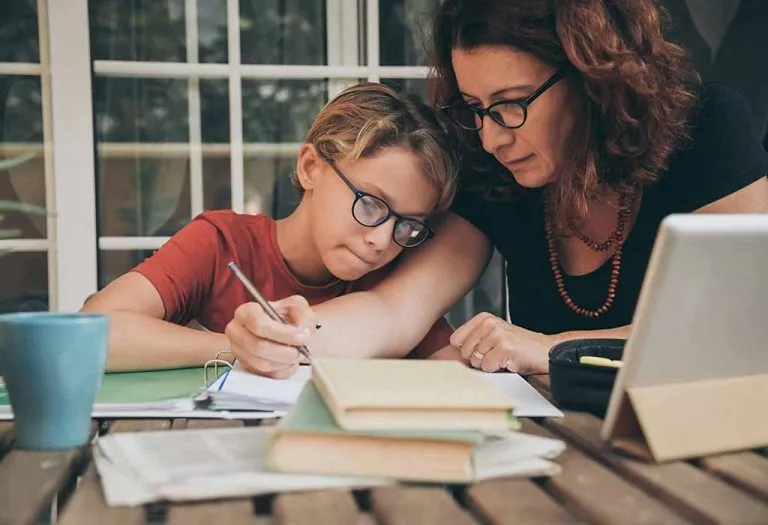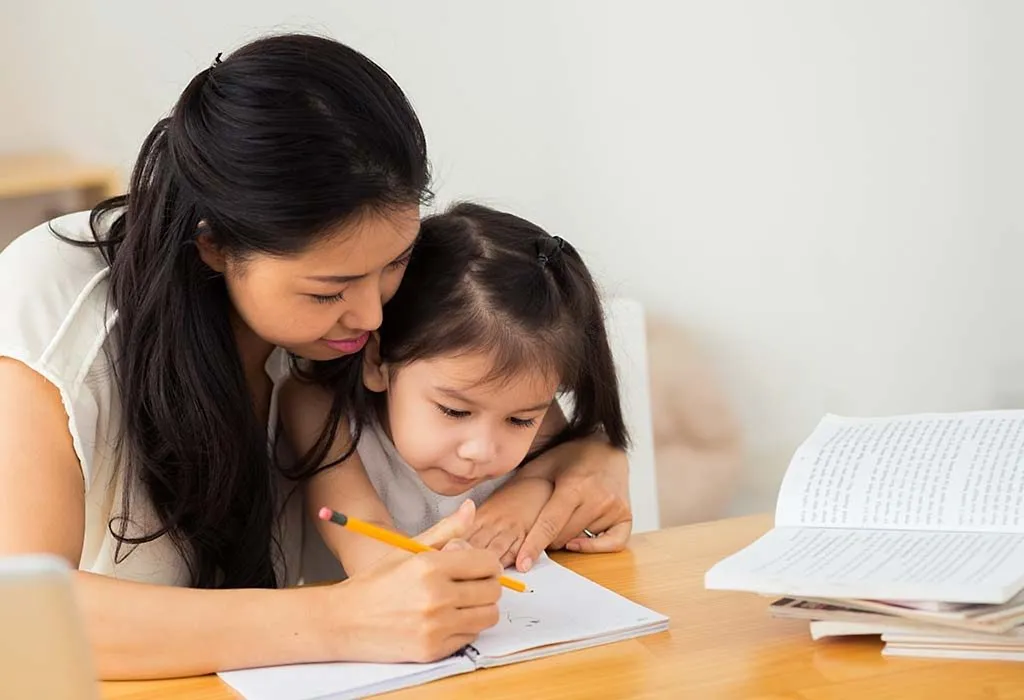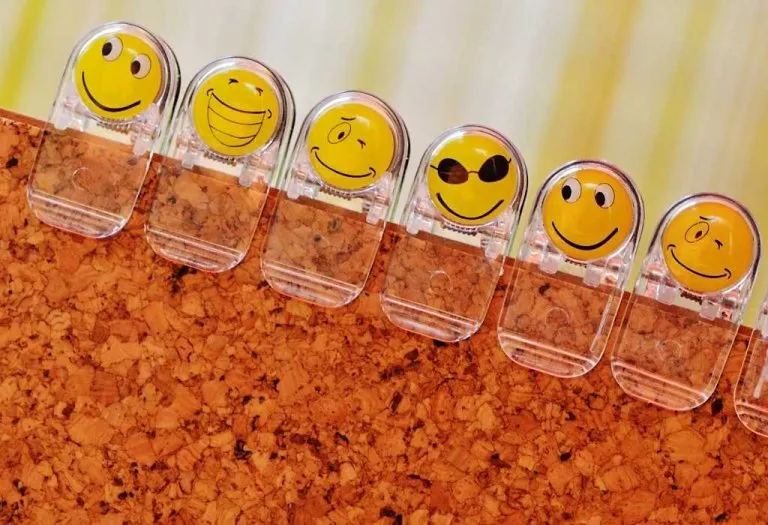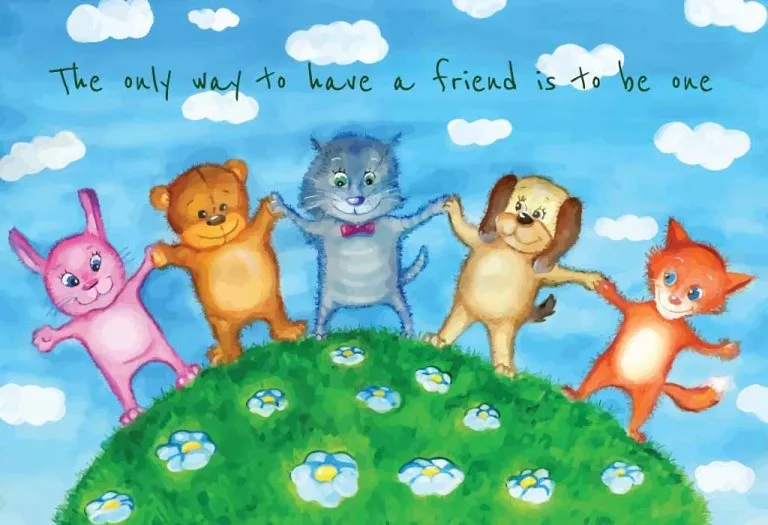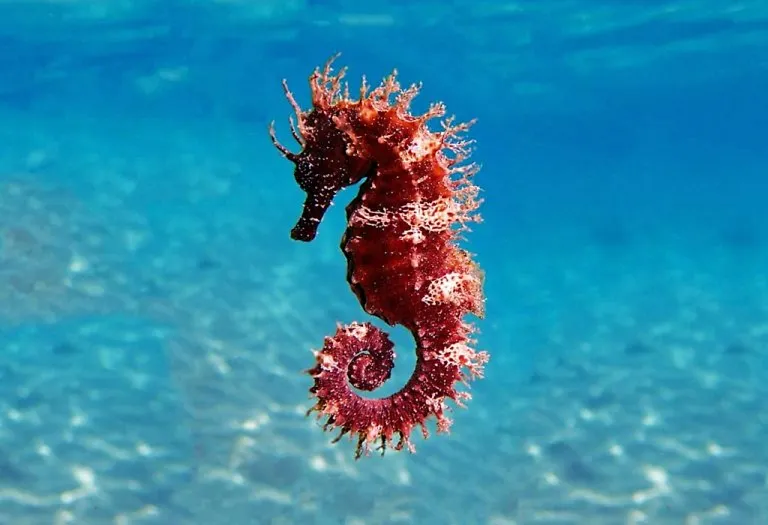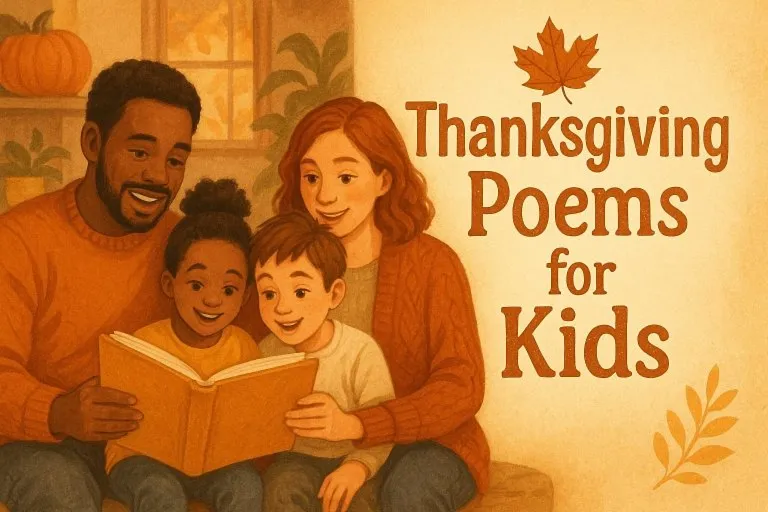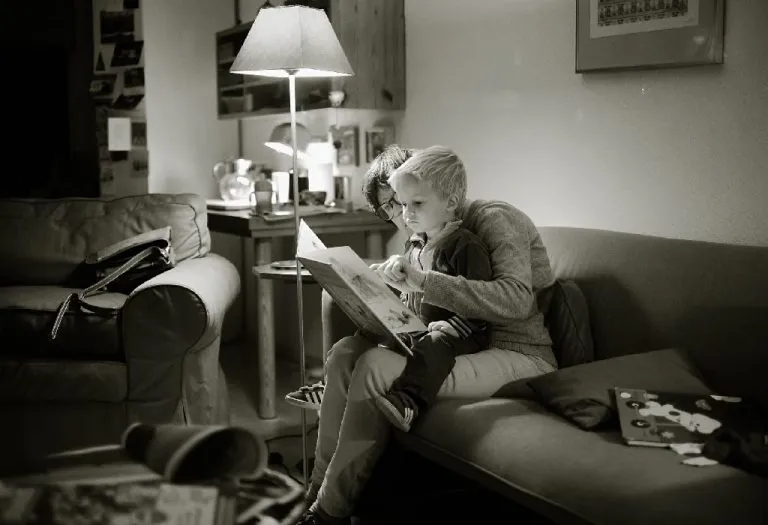Metaphor: Definition, Types and Examples for Kids
Developing writing creativity in kids requires parents and teachers to teach them complex things in an easy manner. Though kids are fast at learning, they sometimes take time to grasp complex things. One major element of descriptive writing is the use of metaphors. As understanding tough metaphors can be challenging for kids, they should be taught the use of metaphors by first starting with easy metaphor examples. However, as they start understanding metaphors, their pleasure in reading increases. Once they start to understand metaphors, they can ace the use of metaphors in their writing too. Read on to learn more about metaphors for kids.
What Is a Metaphor?
Metaphors are commonly used in stories and poetry; however, metaphors for children sometimes can be confusing. So, teachers and parents first need to explain metaphors to a child. A metaphor is a word or phrase used to draw or make a comparison between two things without using words such as “like” or “as”. The metaphor definition for kids simply means a metaphor is a figurative speech word or phrase used to compare two things or activity by creating a resemblance between the two. These figure of speeches help in describing an object or action by making a symbolic comparison to some other thing that is not literally true i.e. it equates two things which are not similar by comparing them.
Importance of Metaphors
Metaphors are important in descriptive writing as they help the writer explain things differently or provide a different insight into the thing. They are used by writers in literature to make their writing more interesting, colourful and artistry. A metaphor makes words come to life by making the subject more relatable for the reader. They also make a complex idea easy to understand. Metaphors enhance writing by adding imagery to it. A metaphor seems strange when they are taken literally, but when used symbolically in poetry, literature or even speaking, they help in creating a vivid description to an object or activity by comparing to something else. Once the kid understands metaphors, he will enjoy literature more and write more effectively.
Types of Metaphors
Metaphors mean symbolically comparing two things or ideas; however, their types make their meaning much broader. The various kinds of metaphors are:
1. Extended/Sustained Metaphor
Extended metaphors are those metaphors which are used longer than a word or phrase, i.e. they are sustained or carried out throughout the whole text or poem. In simple terms, comparisons to the same object are made multiple times to create vivid imagery.
2. Implied Metaphor
In Implied metaphors, two objects or things are compared without mentioning them directly or explicitly. The implied metaphor deviates from direct object A to object B comparison by implying a comparison between the two objects.
3. Dead Metaphor
A dead metaphor is a metaphor which has been used numerous times, making it a cliché. Such metaphors, by their extensive overuse, lose their effect or power on imagery. Hence, they are best avoided.
4. Everyday Metaphors
Everyday metaphors are metaphors which compare everyday objects and things.
5. Animal Metaphor
Animal metaphors are metaphors where a comparison has been made to animals for any object or activity.
6. Nature Metaphors
Nature metaphors compare objects or activities to nature or acts of nature.
7. Mixed Metaphor
A mixed metaphor involves two or more incompatible or incongruous metaphors to make a single metaphor. Mostly they are used for comic purposes, as they combine two unrelated and recognisable metaphors.
How Are Metaphors Different From Similes?
A metaphor is a word or phrase used to draw a comparison between two unrelated things that have something in common. In similes, two things are compared directly using words such as “like” or “as”, whereas in a metaphor, these words are not used and the comparison is indirect. Metaphors state something as something else and they don’t mean the comparison literally. However, similes can be taken literally. A simile, by direct comparison, tells the reader that two things compared are similar if not the same. Whereas, a metaphor is a figure of speech telling a reader that something is something else. Metaphors help poets and writers make their point uniquely and interestingly by creating a new perspective.
Examples of Metaphors for Kids
To make it easy for kids to understand and create metaphors, below is a list of metaphors for kids. These common metaphors for kids will make the kids understand and create metaphors easily. The examples of metaphors are:
Strength and Size Metaphors
Strength and size comparisons are a great way to create metaphors to create imagery of the size or the strength of someone or something.
- He had the trunks of trees for arms.
- The linebacker was a mountain of a man, towering over his opponents.
- Despite the setbacks, her iron will kept her pushing forward.
- Don’t underestimate her—she’s small but mighty in the boxing ring.
- After years of training, he was an ox, lifting weights effortlessly.
Time Comparisons Metaphors
Time comparisons metaphors are created by comparing some object with time.
- Rahul is a snail behind the wheel.
- Looking at old photos, I realized time is a thief – my children grew up so fast.
- He still uses a flip phone—he’s completely stuck in the past.
- It’s already December? Time flies like an arrow!
- Doctors worked in a race against time to save the patient.
Taste and Smell Metaphors
Using taste in metaphors helps in creating the imagery of favourable or unfavourable scenarios for any activity.
- The baseball game resulted in a sweet victory for our school team.
- After landing her dream job, she thought life is sweet.
- Losing the championship was a bitter pill to swallow for the team.
- When he avoided eye contact, I smelled a rat.
- After years of being rude, he finally got a taste of his own medicine.
- After her shower, she felt fresh as a daisy.
Animals and Instruments Metaphors
Metaphors having an animal and instrument reference make the kid learn and understand different animal/instrument sounds along with learning the use of metaphors.
- The elephant in the circus let out a trumpet blast.
- The general’s speech had the lion’s roar, inspiring his troops.
- Be careful—he seems friendly, but he could be a snake in the grass.
- She’s always busy as a bee, juggling work and family.
- He didn’t like to play second fiddle to his more famous colleague.
- He’s always blowing his own trumpet instead of letting his work speak for itself.
Temperature Metaphors
Some funny metaphors for kids use different things as a means of comparison of temperature.
- Don’t touch the pizza; it’s lava.
- After the argument, she gave him the cold shoulder for days.
- The team gave the new employee a warm welcome.
- He was boiling mad when he found out about the betrayal.
- The proposal received a lukewarm response from the committee.
Food and Weather Metaphors
Food is utilised well to create metaphors about the weather. Kids like food, so comparing the weather with food makes them understand the metaphor well and they can be creative with them too.
- The fog in Shimla was pea soup.
- Their argument about chores was just a storm in a teacup.
- After getting the promotion, she’s been walking on sunshine all week.
- The exam was a piece of cake for the prepared students.
- I’m staying home today because I’m feeling under the weather.
Room Cleaning Metaphors
Different things are compared to the tidiness of the room to create a room cleaning metaphor. They are used to denote the condition of the room, especially by indirectly asking the kids to clean their room by bringing to their attention the state of their room.
- Your room has mountains of clothes everywhere.
- The company kept sweeping complaints under the rug until the scandal exploded.
- The celebrity couple shouldn’t air their dirty laundry on social media.
- The new CEO promised to clean house and replace ineffective managers.
- I need to dust off my Spanish before the Mexico trip.
Animal and Human Comparison Metaphors
Using animal and human comparisons in metaphors are the most common metaphors. However, this comparison is also commonly used in similes with “like” or “as”, so don’t confuse the two.
- She tamed her wild mane of hair with a scarf.
- She’s a social butterfly.
- He’s a mule about apologies.
- He’s a snake in negotiations.
- He is a night owl.
Mirrors and Water Metaphors
Many metaphors for kids compare water and a mirror to imply the reflectiveness of the water and the stillness of the water.
- The lake in the village was a mirror.
- His eyes were still pools of deception.
- The past is a cracked mirror—you can’t piece the reflection back.
- Her words were ripples in a lake, spreading silence.
- Time is a river dragging us forward.
How to Use Metaphors in a Sentence
To use metaphors in a sentence, compare two unrelated things to highlight a shared quality without using “like” or “as” (which would make it a simile). For example, “Her voice was music to his ears” suggests her voice is as pleasing as music, creating a vivid image. Metaphors work best when they’re clear, relatable, and enhance understanding—avoid clichés (“time is money”) unless you add a fresh twist. They’re powerful in poetry, storytelling, and persuasive writing because they evoke emotions and paint strong mental pictures. Just ensure the comparison makes sense in context, like describing resilience as “she was a rock during the crisis” to imply unshakable strength.
Easy Tips for Writing Metaphors
Whether you’re writing a story, an essay, or even a speech, a well-placed metaphor can bring your ideas to life. Here are some simple tips to help you craft effective metaphors.
1. Compare Unrelated but Familiar Things
Choose two different things that share a surprising similarity, like “The classroom was a zoo” to imply chaos. The more unexpected yet fitting the comparison, the stronger the metaphor.
2. Avoid Clichés or Give Them a Twist
Overused metaphors (“life is a rollercoaster”) lose impact. Instead, refresh them—”Life wasn’t just a rollercoaster; it was a broken Ferris wheel, spinning unpredictably.”
3. Keep It Clear and Simple
A good metaphor should be easy to understand. Don’t force a complicated comparison—”His anger was a volcano” works better than an obscure reference.
4. Use Sensory Details
Engage the reader’s senses for a stronger effect. Instead of “She was happy,” try “Her laughter was sunshine, warm and bright.”
5. Match the Tone of Your Writing
A metaphor should fit the mood—playful, serious, or poetic. “Time is a thief” suits a reflective tone, while “His smile was a neon sign” feels more lively.
6. Practice with Everyday Observations
Notice metaphors in daily life—”The traffic was a river of red lights.” The more you play with comparisons, the more natural they’ll become in your writing.
How Reading Helps Kids Learn Metaphors
Reading exposes kids to metaphors naturally, allowing them to see how comparisons can make descriptions more engaging and relatable. Through books, stories, and poems, children unconsciously absorb figurative language, building their ability to think and communicate imaginatively.
1. Exposure to Rich Language
Books, especially fiction and poetry, are filled with metaphors that show kids how words can paint pictures. For example, phrases like “The world is a stage” or “Her heart was a golden sun” help them understand abstract concepts through imagery.
2. Contextual Learning
Unlike direct lessons, reading presents metaphors within meaningful stories, making them easier to grasp. When a child reads “The night was a thick black blanket,” they connect the comparison to the mood of the scene.
3. Encourages Creative Thinking
As kids encounter metaphors in books, they begin to experiment with their own comparisons. A child might describe happiness as “a balloon floating in the sky” after reading similar imaginative language.
4. Builds Vocabulary & Comprehension
Metaphors often use descriptive words that expand a child’s vocabulary. Understanding phrases like “Time is a thief” deepens their ability to interpret meaning beyond literal words.
5. Enhances Emotional Expression
Metaphors help children articulate feelings in relatable ways. A book describing sadness as “a heavy raincloud” gives them a tool to express their own emotions more vividly.
6. Develops Critical Thinking
Decoding metaphors requires kids to analyze and infer, strengthening their reasoning skills. For instance, figuring out why “The classroom was a beehive” means busy activity helps them think symbolically.
7. Makes Learning Fun & Memorable
Whimsical metaphors in children’s books (“The moon was a silver cookie”) stick in their minds, making language playful and engaging. This enjoyment motivates them to use metaphors in their own speech and writing.
Fun Metaphor Activities for Kids to Practice at Home
Practicing metaphors at home doesn’t have to feel like a lesson—it can be playful, engaging, and full of imagination. Here are some entertaining activities to help children explore metaphors while having fun.
1. “What Am I?” Guessing Game
Write down metaphor-based riddles (e.g., “I’m a shining coin in the sky—what am I?” [the moon]) and take turns guessing. This sharpens their ability to think figuratively while making it a lively challenge.
2. Metaphor Drawing Challenge
Ask your child to pick a metaphor (“The clouds were fluffy cotton candy”) and draw it literally. This visual exercise reinforces how metaphors compare two unlike things in a memorable, artistic way.
3. Nature Walk Metaphor Hunt
While exploring outdoors, encourage kids to describe what they see using metaphors (“The tree is a giant’s umbrella”). This connects learning to the real world and sparks observation skills.
4. Metaphor Storytime Twist
Read a favorite book together and pause to point out metaphors. Then, challenge your child to invent their own characters or settings (“The dragon was a flying bonfire”).
5. Emotion Metaphor Jar
Write emotions on slips of paper (happy, angry, scared) and have kids pick one to describe with a metaphor (“Happiness is a bouncing puppy”). This builds emotional literacy and creative expression.
6. Mix-and-Match Metaphor Cards
Create cards with nouns (e.g., “heart,” “storm,” “book”) and descriptors (e.g., “golden,” “wild,” “treasure”). Let kids pair them randomly to form silly or profound metaphors (“A book is a treasure chest”).
FAQs
1. Can metaphors confuse literal-thinking kids?
Young children’s concrete thinking might initially make them interpret metaphors literally (“Is my heart really a drum?”). But with repeated exposure and age-appropriate children’s metaphor examples, they naturally develop the ability to understand figurative language between the ages of 5 and 7. Teachers and parents can help by explaining comparisons in simple terms.
2. Do animals use metaphors?
While animals communicate effectively within their species through sounds, gestures and scents, they lack the abstract reasoning and language capacity required for metaphorical thinking – their communication is always literal and tied to immediate needs like danger, food, or mating. The complexity of human language and symbolism makes metaphors uniquely human.
3. Why are kids’ metaphors stranger than adults’?
Children’s unfiltered imaginations and limited vocabulary lead to delightfully bizarre comparisons (“My anger is a purple tornado eating bananas”), as they freely associate concepts that adults would consider unrelated, revealing their unique perspective before learning conventional expressions.
Kids may ask why use metaphors? Why not just write simply without using metaphors for imagery? The obvious answer is that simple writing effectively conveys what a writer wants to say. However, by using metaphors the writer creates unique imagery for the readers by comparing the subject with an unrelated object. The use of metaphors makes the writer unique and enhances writing.
Also Read:
Learn about Question Mark (?)
Benefits of Journaling for Children
Fun Writing Prompts Ideas for Children
Effective Tips for Parents to Improve Writing Speed of Their Child
Was This Article Helpful?
Parenting is a huge responsibility, for you as a caregiver, but also for us as a parenting content platform. We understand that and take our responsibility of creating credible content seriously. FirstCry Parenting articles are written and published only after extensive research using factually sound references to deliver quality content that is accurate, validated by experts, and completely reliable. To understand how we go about creating content that is credible, read our editorial policy here.





